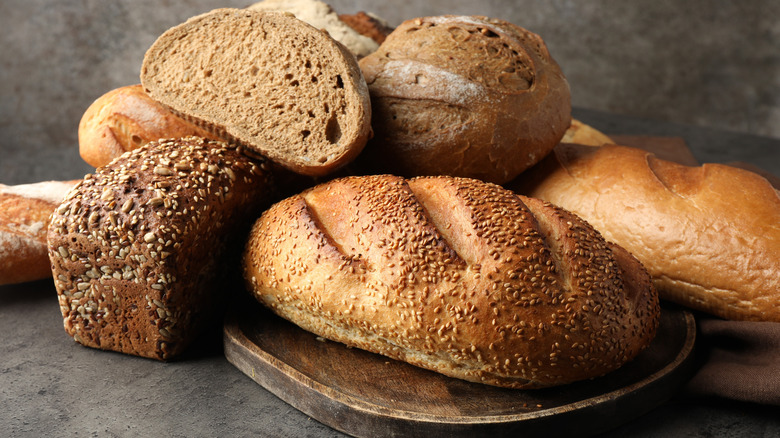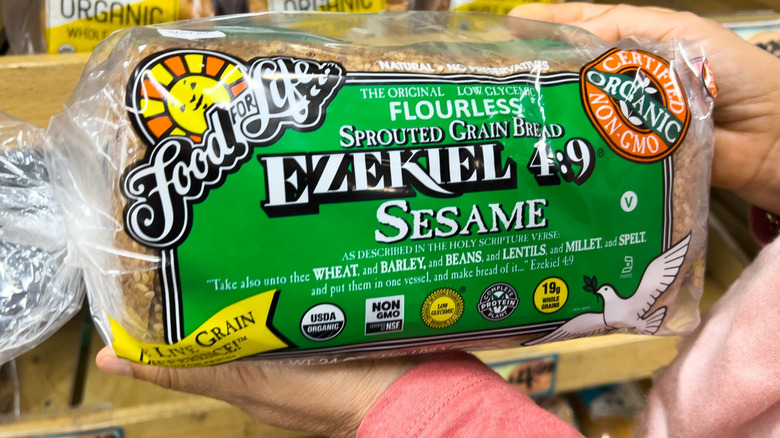The Best Type Of Bread To Buy If You're Hoping To Eat More Protein
Did you know there's a bread that has more protein than an egg? Don't worry: It's not another recipe from social media that uses cottage cheese or Greek yogurt to make bread. It's sprouted grain bread, and to get more information on it, The Takeout spoke to Dr. Federica Amati, head nutritionist at ZOE, a gut health program that uses advanced at-home testing to create personalized nutrition plans.
"Seeded or multigrain breads tend to deliver more protein per slice compared to standard white or refined breads," notes Dr. Amati. She recommends sprouted grain as one of the best bread options that's naturally high in protein: "The sprouting process further boosts protein availability and nutrient absorption." As a bread-aholic, I can assure you that it doesn't taste like cardboard and is very flavorful, especially when toasted.
Sprouted grain bread is as it sounds — bread made with various grains and sometimes legumes, nuts, and seeds that are sprouted before being milled into flour. Unlike regular breads made from refined flour, like white bread (and some kinds of multigrain bread, which isn't always what it seems), we calculated that the O.G. sprouted grain bread Ezekiel 4:9 by food For Life contains, on average, five grams of protein in a 34-gram slice, compared to approximately three grams of protein in a slice of classic white Wonder Bread.
Additionally, there's twice as much fiber per slice in the sprouted grain bread. "As an added plus, the process of sprouting increases the number of antioxidants in the bread, which is beneficial for overall anti-inflammatory properties and for your gut microbiome," says Amati.
Why quality, not protein claims matters most
You likely won't have to go out of your way to find this bread, because it's available at most grocery stores in the frozen food section, bread aisle, or bakery. However, if spouted grain bread isn't available, Amati advises against labels that advertise "high-protein," because these breads often use low-quality protein sources that can cause digestive issues. Amati recommends using the ZOE Processed Food Risk Scale, available in the ZOE nutrition app, as a tool to quickly assess how products like certain breads can impact your health and help you make more informed and healthier choices.
"What really matters is choosing breads that are low-risk minimally processed, with a short list of whole ingredients like sprouted grains, legumes, nuts, or seeds. These options tend to be more nutrient-dense and easier to digest," says Amati. She also points out that a high-quality, high-protein bread alone doesn't necessarily have to be the primary protein source.
According to Amati, "Most of us get enough protein so I like to focus on toppings that deliver protein and fiber, since most of us (96% of us!) are lacking in fiber." You can never go wrong with avocado toast, but artichoke toast is definitely worth a try, especially since it's high in both protein and fiber. Examples of some of Amati's favorite toppings include nut butters, hummus with fresh veggies, tinned fish and arugula, or eggs. She emphasizes trying the latter scrambled with white miso paste and a scoop of ZOE's Daily30+ for the flavor, gut-promoting fiber, and nutrients it offers.

